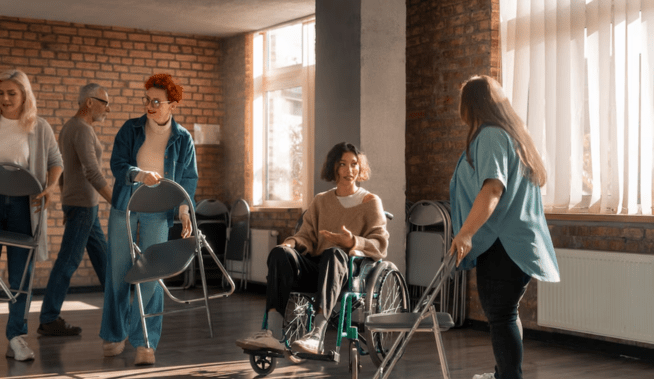Navigating the world of disability support services can be complex, but the National Disability Insurance Scheme (NDIS) has made significant strides in ensuring individuals with disabilities receive the care and support they need. Two crucial components of this system are NDIS Housing and Supported Independent Living (SIL). These services are designed to provide a safe, comfortable, and empowering environment for individuals with disabilities, helping them live as independently as possible.
This comprehensive guide explores what NDIS Housing and Supported Independent Living entail, their benefits, and how individuals can access these vital services.
What is NDIS Housing?
1. Understanding NDIS Housing
NDIS Housing refers to specialized accommodation options designed for individuals who require additional support due to disabilities. It encompasses various types of housing, including Specialist Disability Accommodation (SDA), which caters to those with high support needs.
2. Types of NDIS Housing
- Specialist Disability Accommodation (SDA): Designed for individuals with significant functional impairments, offering features like wheelchair accessibility and reinforced walls for safety.
- Short-Term Accommodation (STA): Temporary housing for individuals who need a break from their regular living arrangements or are transitioning between homes.
- Medium-Term Accommodation (MTA): A bridging option for individuals awaiting permanent housing solutions under the NDIS.
- Individual Living Options (ILO): Customizable support arrangements that allow participants to choose how and where they want to live.
3. Who is Eligible for NDIS Housing?
To be eligible for NDIS Housing, an individual must:
- Be a registered NDIS participant.
- Have a disability that significantly impacts daily living.
- Require specialized accommodation to support their needs.
- Meet the criteria for Specialist Disability Accommodation (if applicable).
What is Supported Independent Living (SIL)?
1. Defining Supported Independent Living
Supported Independent Living (SIL) is a type of support that helps individuals with disabilities live as independently as possible while receiving assistance with daily tasks. SIL is typically provided in shared accommodation settings, but it can also be arranged in an individual’s home.
2. Levels of SIL Support
SIL is categorized into three levels, depending on the intensity of support required:
- Lower Needs: Occasional assistance with personal care and household tasks.
- Standard Needs: Regular support with daily living activities, such as meal preparation, cleaning, and personal care.
- Higher Needs: 24/7 support for individuals with complex behavioral or medical requirements.
3. Benefits of Supported Independent Living
- Enhanced Independence: SIL promotes autonomy while ensuring necessary support is available.
- Social Inclusion: Living with others fosters social interaction and a sense of community.
- Tailored Support: Assistance is personalized to meet the unique needs of each participant.
How to Access NDIS Housing and SIL
1. Steps to Apply for NDIS Housing and SIL
- Step 1: Assess Your Needs: Work with an NDIS planner or support coordinator to determine your accommodation and support requirements.
- Step 2: Develop a Housing Plan: Outline your living goals and the level of assistance you need.
- Step 3: Submit Your NDIS Plan: Ensure that your plan includes funding for NDIS Housing and SIL.
- Step 4: Find Suitable Accommodation: Work with service providers to find a home that meets your needs.
- Step 5: Transition into Your New Home: Move in and adjust to your new living arrangement with support from your SIL provider.
2. Funding Considerations
Funding for NDIS Housing and SIL is provided through different budget categories within an NDIS plan. It’s essential to work with an NDIS planner to ensure that your plan reflects your needs.
3. Choosing the Right Provider
When selecting an NDIS Housing or SIL provider, consider the following:
- Experience and Reputation: Look for providers with a track record of delivering quality support services.
- Flexibility: Ensure the provider can accommodate your specific needs and preferences.
- Support Staff Qualifications: Verify that staff are trained and experienced in disability care.
Challenges and Solutions in NDIS Housing and SIL
1. Common Challenges
- Limited Availability: Finding suitable housing can be challenging due to high demand.
- Navigating the Application Process: The process can be complex and time-consuming.
- Funding Restrictions: Securing adequate funding can sometimes be a hurdle.
2. Solutions and Recommendations
- Work with an NDIS Support Coordinator: They can help navigate the process and find suitable housing.
- Plan Ahead: Start the application process early to avoid delays.
- Advocate for Your Needs: Ensure your plan accurately reflects your housing and support requirements.
The Future of NDIS Housing and Supported Independent Living
1. Innovations in Housing Solutions
The future of NDIS Housing is seeing advancements in technology and design to create more inclusive and accessible living environments. Smart home technology, assistive devices, and community integration initiatives are becoming more prevalent.
2. Expanding Access to SIL
Efforts are being made to increase the availability of Supported Independent Living options to accommodate the growing demand. More funding, policy changes, and innovative housing models are being explored.
3. Enhancing Community Integration
Future trends focus on integrating NDIS Housing and SIL within mainstream housing developments to promote inclusivity and reduce social isolation.
Conclusion
NDIS Housing and Supported Independent Living play a vital role in ensuring individuals with disabilities can live fulfilling and independent lives. By understanding the options available, the application process, and the benefits of these services, participants and their families can make informed decisions about their living arrangements. With continuous improvements in accessibility, technology, and support systems, the future of NDIS Housing and SIL looks promising, paving the way for greater independence and quality of life for all participants.













